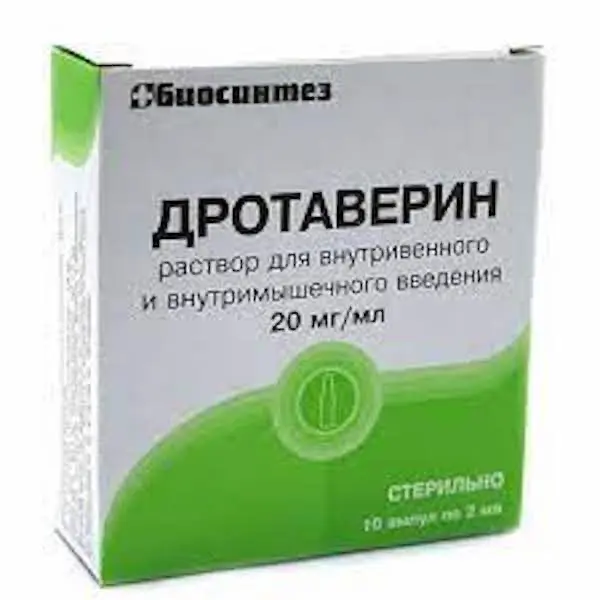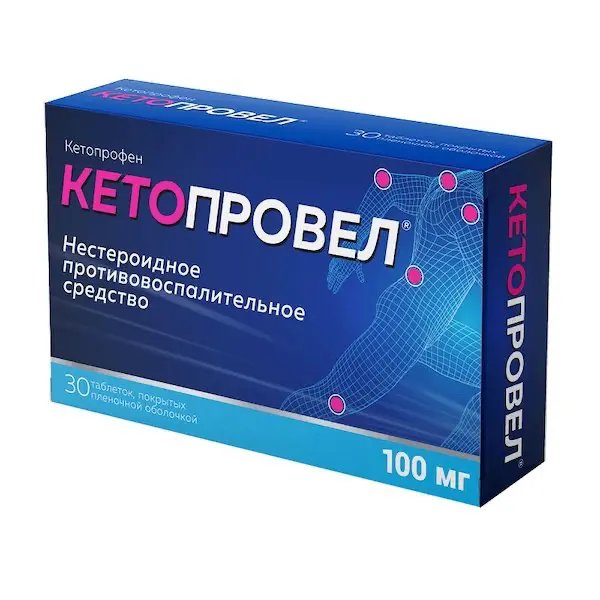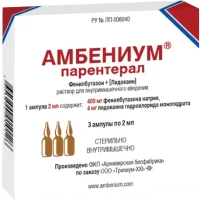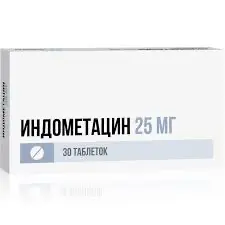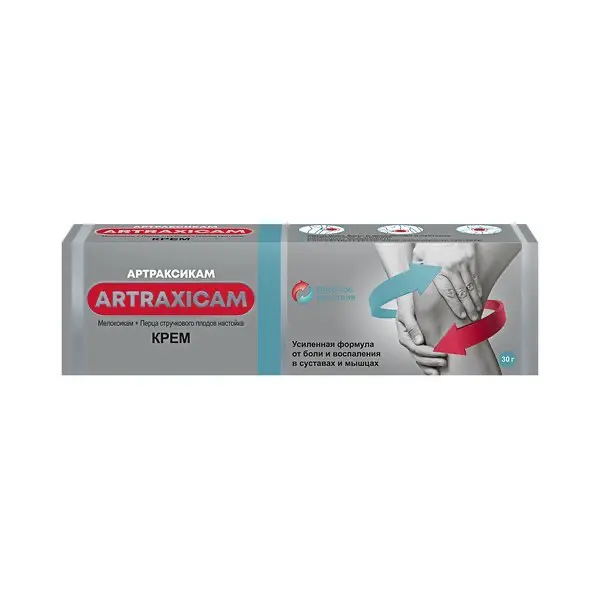Description
Drotaverine Pharmacodynamics
Drotaverine is an isoquinoline derivative, similar to papaverine in chemical structure and pharmacological properties, but more pronounced and prolonged action. Drotaverine has a pronounced antispasmodic effect on smooth muscles by inhibiting the enzyme phosphodiesterase-4 (FDE-4). PDE-4 enzyme is required for hydrolysis of cyclic adenosine monophosphate (cAMP) to adenosine monophosphate (AMP). Inhibition of the FDE-4 enzyme leads to an increase in the concentration of cAMP, which triggers the following cascade reaction: high concentrations of cAMP activate cAMP-dependent phosphorylation of myosin light chain kinase (MLCK). Phosphorylation of CLSM leads to a decrease in its affinity for calcium ions, the calmodulin complex, resulting in the inactivated form of CLSM supporting muscle relaxation. In addition, cAMP affects the cytosolic concentration of calcium ions by stimulating the transport of calcium ions into the extracellular space and the sarcoplasmic reticulum. This lowering of the calcium ion concentration by drotaverine through the cAMP explains the antagonistic effect of drotaverine with respect to calcium ions.
In vitro, drotaverine inhibits FDE-4 isoenzyme without inhibiting FDE-3 and FDE-5 isoenzymes, so the effectiveness of drotaverine depends on the concentrations of FDE-4 in tissues, which content varies in different tissues. High levels are found in the biliary and urinary tract, uterus, gastrointestinal tract. FDE-4 is the most important in suppressing the contractile activity of smooth muscles, therefore, selective inhibition of FDE-4 may be useful for the treatment of hyperkinetic dyskinesias and various diseases accompanied by spastic conditions of the gastrointestinal tract (GIT).
Hydrolysis of CAMP in the myocardium and smooth muscle of blood vessels occurs mainly by FDE-3, which explains the fact that drotaverine has no serious cardiovascular side effects and no pronounced cardiovascular effects with its high spasmolytic activity.
Drotaverine is effective for smooth muscle spasms of both neurogenic and muscular origin. Regardless of the type of autonomic innervation, drotaverine relaxes smooth muscles of the gastrointestinal tract, biliary tract, and urogenital system.
Indications
– Smooth muscle spasms in diseases of the biliary tract: cholecystolithiasis, cholangiolithiasis, cholecystitis, pericholecystitis, cholangitis, papillitis;
– urinary tract smooth muscle spasms: urolithiasis (including nephrolithiasis, ureterolithiasis), pyelitis, cystitis, bladder tenesm;
As adjuvant therapy (when the tablet form cannot be used):
– In spasms of the smooth muscles of the gastrointestinal tract: gastric and duodenal ulcer, gastritis, cardiac and gateway spasm, enteritis, colitis, irritable bowel syndrome;
– In gynecological diseases: dysmenorrhea;
– During some instrumental studies, including cholecystography.
Contraindications
– Hypersensitivity to the active substance or any of the excipients of the drug;
– Hypersensitivity to sodium disulfite (see “Special Indications”);
– severe hepatic or renal impairment;
– severe chronic heart failure;
– Grade II-III AV blockade;
– childhood (the use of drotaverine in children has not been studied in clinical trials);
– period of childbirth;
– breast-feeding period.
With caution
– In arterial hypotension (danger of collapse, see “Special Precautions”);
– In severe atherosclerosis of the coronary arteries;
– In the case of adenoma of the prostate;
– In glaucoma;
– During pregnancy (see “Administration during pregnancy and breast-feeding”).
Use in pregnancy and during breastfeeding
The use of drotaverine during pregnancy has no teratogenic and embryotoxic effects. In pregnant women the drug is prescribed only in cases when the potential benefit to the mother exceeds the potential risk to the fetus.
If it is necessary to apply the drug during breast-feeding, it is necessary to decide on stopping breast-feeding.
Dosage and administration method
- Intramuscularly 2-4 ml (40-80 mg) 1-3 times a day. The course of treatment is 1-2 weeks. If prolonged treatment is necessary, switch to oral administration of the drug in tablet form.
- In acute colic (renal or cholelithiasis) – 2-4 ml (40-80 mg) in 10-20 ml of 0.9% sodium chloride solution or 5% dextrose solution intravenously slowly (duration of infusion about 30 seconds).
- Do not mix in the same syringe with aminophylline solution.

